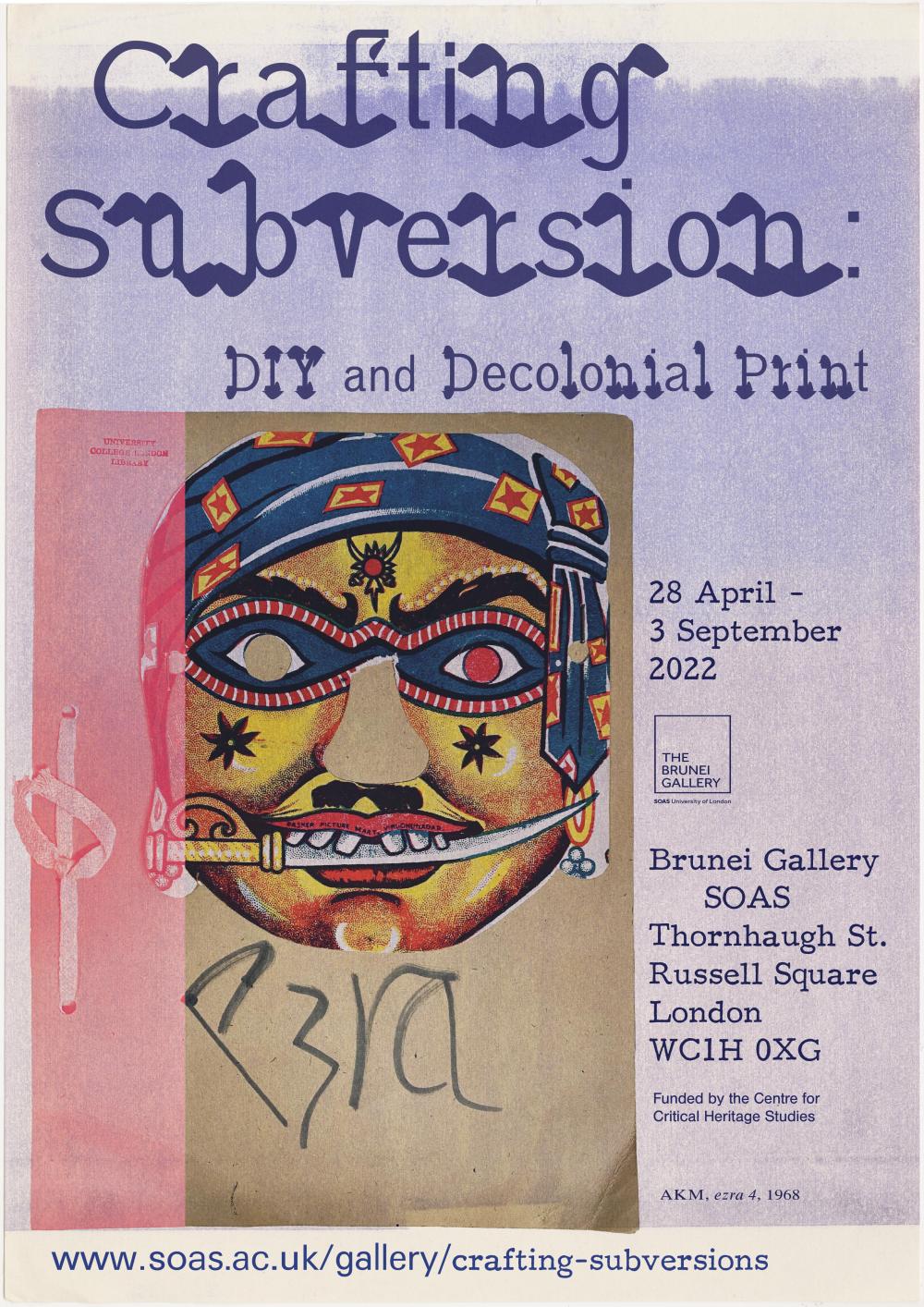Latest Brunei Gallery exhibition - Crafting Subversion: DIY and Decolonial Print

24 June 2022
Crafting Subversion: DIY and Decolonial Print is the latest exhibition at SOAS’s Brunei Gallery , guest curated by British Academy Postdoctoral Research Fellow, Pragya Dhital. The exhibition emerges from Pragya’s research on censorship in India during the colonial period and the Internal Emergency.
Spanning literature produced from the 1930s-1980s, the exhibition explores various attempts to forge connections between readers and writers beyond the control of the state through the medium of DIY print, with focus on the Gestetner cyclostyle duplicator.
The process of stencil duplicating involves copies being made from a cut-out sheet (a stencil), through which paint or ink is applied onto paper. (This technique is also used by graffiti artists such as Banksy to paint stencils on walls). Manually operated and not requiring electricity, this potential of this Victorian-era invention was quickly seized by producers of underground print across the world - from writers of zines to producers of samizdat material.
A main focus of the exhibition is literature produced during the first and 'second' Indian independence struggles – the first by Congress against British rule, the second by the movement for Total Revolution against the ruling Congress party during the Indian Emergency of 1975-77.
Saturday 25 June marks the anniversary of the proclamation of Emergency on 25 June 1975 and 2022 is the 75th anniversary of Indian Independence. On declaring Emergency, Indira Gandhi shut off the electricity supply to the newspaper district in Delhi and took control of the national radio station, leaving Indians to look for alternative sources of news. Cyclostyled print was therefore an important means for Indians to access uncensored news during both the colonial and postcolonial periods.
The Indian literature is contextualized with reference to material from a wide range of archives, produced using low-tech printing and duplication processes. These range from literary magazines printed by the beat writer Ed Sanders in 1960s New York to samizdat material produced in 1980s Poland. Whether literary or political, all of these writers were interested in DIY print as a medium for free expression and autonomous action.
The exhibition includes material from Asia Art Archive; Bruce Castle Museum’s Gestetner archives; pamphlets from the British Library’s collection of publications proscribed in colonial India; literature collected by Ram Dutt Tripathi, a former BBC journalist who was imprisoned during the Indian Emergency of 1975-77, and now digitised by the University of Goettingen’s Long Emergency project; little magazines edited by the poet and translator, Arvind Krishna Mehrotra, and other publications from UCL’s collections of small press and samizdat literature, and an animated facsimile by Raqs Media Collective.
For further information about the exhibition please contact Pragya at: pd19@soas.ac.uk
The Brunei Gallery is open from Tuesday to Saturday 10.30 to 17.00; Thursday 10:30 to 20.00
This project is funded by the Centre for Critical Heritage Studies and supported by UCL Department of History. The Poster designed by Fraser Muggeridge Studio.
